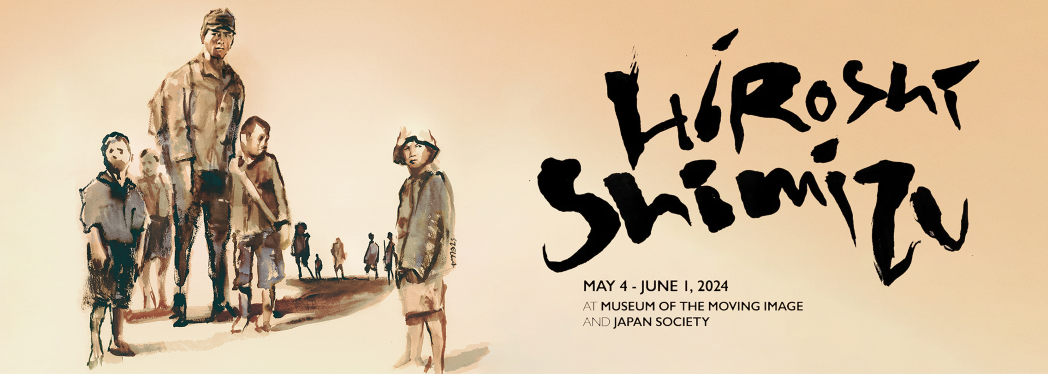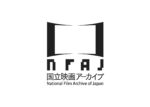Events
Film
05/04/2024 - 06/01/2024
Astoria, New York City
Hiroshi Shimizu

Time and Location
Part I: The Shochiku Years: May 4 – May 19
Museum of the Moving Image (Astoria, NY)
Part II: The Postwar and Independent Years: May 16 – June 1
Japan Society (New York, NY)
About


【PART I: THE SHOCHIKU YEARS】
An unsung master of Japanese cinema, Hiroshi Shimizu (1903–1966) was highly regarded by contemporaries Yasujirō Ozu and Kenji Mizoguchi for his seemingly effortless formal ingenuity, distinguished by his signature linear traveling shots and his naturalistic, open-air depictions of regional Japan. Shot on location and frequently employing non-actors, the loosely plotted, low-key tragicomedies that comprise his most characteristic work foregrounded the transient lives and hardships of everyday people with a marked regard for those pushed to the margins of society, including drifters, migrant workers, war veterans, persons with disabilities, outcast women, and especially children, in whom the director took a personal philanthropic interest and of whom he remarked: “They are natural. They breathe the air. Films must have humans who breathe the air.”
This two-part retrospective offers the first New York survey of the major yet often overlooked filmmaker in more than 30 years and the largest ever assembled in North America. Presented at the Museum, Part I: The Shochiku Years gathers the best films of Shimizu’s protean and varied career with the studio from his stark, strikingly modernist early melodramas, both silent and sound, through the lyrical tours of provincial life with which he would become chiefly associated. Highlights include the filmmaker’s best-known films in the United States (Japanese Girls at the Harbor, Mr. Thank You, The Masseurs and a Woman, Ornamental Hairpin) alongside rarer contemporaneous works that display the full stylistic and tonal range of this consummate craftsman’s accomplishments, including two of the director’s supreme masterpieces, Children in the Wind (1937) and its two-volume sequel Four Seasons of Children (1939). All films will be presented in 35mm prints imported from collections and archives in Japan.


【Part II: The Postwar and Independent Years】
Born the same year as his close friend Yasujiro Ozu, Hiroshi Shimizu (1903-1966) remains one of the forgotten masters of Japanese cinema, praised by contemporaries including Sadao Yamanaka and Kenji Mizoguchi but neglected despite his radical spirit and versatile talent. With over 160 films directed over a 35-year-career that spanned the silent era into the golden age of Japanese cinema, Shimizu is distinguished by his unconventional approach to plotting—one loosely sketched and carefree—and a roaming camera that drifts through the open airs of provincial Japan. Shimizu’s world is suffused with an innate naturalism — one populated by pastorals and country passages—and a lyrical humanism that observes the journeys of children, working women, outcasts and travelers alike.
The second half of a two-part retrospective on the major filmmaker, The Postwar and Independent Years tracks Shimizu’s career after leaving Shochiku, embarking on a new path into self-financed films, independent productions, and contract work at Shintoho and Daiei studios. Shimizu’s postwar filmography encapsulates the everyday tragedies of life, the delicate sentiments of love and loss in the wake of the war, and the pains that befall common people — from the hardships of motherhood to the ostracization of disability. Capturing Japan in a changing of eras, these films illustrate a nation trying to pull itself together, weaving themes of collective struggle and hope while focusing on the lives of the dispossessed.
Bookmarked by his self-produced Beehive trilogy—a poetic trilogy that chronicles the lives of war orphans and starred orphans raised by Shimizu himself after the war at his Beehive orphanage (named for the excited “buzz” of children that emanated from the home)—The Postwar and Independent Years features rare screenings of the director’s late-career period. Shimizu’s postwar films have seldom screened internationally, despite being achievements on equal footing with his prewar years. As part of the series, Japan Society has commissioned new English subtitles for five films—some never-before-seen in English-speaking countries. Previously the organizers of the first U.S. Shimizu retrospective in 1991, Japan Society is proud to co-present the largest ever focus on Shimizu in North America.
Co-organized with Museum of the Moving Image, Japan Society, and the National Film Archive of Japan.



For tickets (Museum of Moving Image), please visit: Museum of the Moving Image
For tickets (Japan Society), please visit: Japan Society